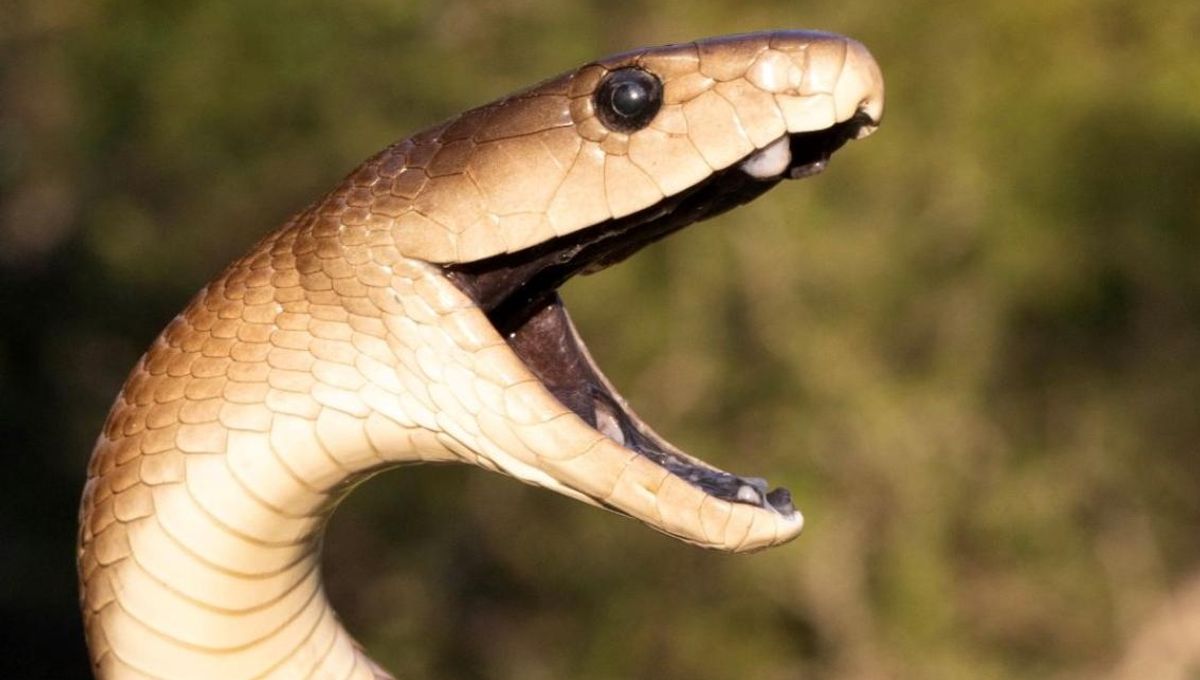
People given antivenoms against mamba bites often initially get better, only to start experiencing effects of the venom again, often with fatal consequences. New research reveals the reason and offers a path to life-saving solutions, but leaves questions about snake family relationships unanswered.
Black mambas have a deadly enough reputation to feature in songs from the other side of the world. Africa also has three species of green mamba. Professor Bryan Fry of the University of Queensland told IFLScience, “Cobras and puffadders bite more people, but mambas have a higher mortality rate, despite the fact that polyvalent antivenoms all include them.”
That’s in large part because people given the antivenoms frequently die, despite showing initial improvement. Fry and colleagues have revealed that for three mamba species, the venoms can kill in two ways, and existing antivenoms only treat one.
“The Black Mamba, Western Green Mamba, and Jameson’s Mamba snakes aren’t just using one form of chemical weapon; they’re launching a coordinated attack at two different points in the nervous system,” Fry said in a statement.
Initially, the venom causes flaccid paralysis by damaging the postsynaptic nervous system. Existing antivenoms can treat this. However, initial recovery reverses because other molecules cause spastic paralysis, which was masked by the other components. “We previously thought the fourth species of mamba, the Eastern green mamba, was the only one capable of causing spastic paralysis,” Fry said.
Both forms of paralysis can have harmful effects on the limbs, but these will pass with time. Unfortunately, time is something victims of the bites seldom have, because either paralysis stops breathing; in one case leaving muscles without the strength to move the diaphragm, in the other locking the diaphragm in a contracted state. Fry told IFLScience that if placed on an artificial respirator, victims will recover but they’re in short supply where the snakes are most common. “It’s not like you can share a respirator, half an hour for you, half an hour for me,” Fry noted.
“Without antivenom or artificial respiration, the chances of survival are among the lowest of all snake bites,” Fry told IFLScience. Humans are not mamba’s prey, they just want us to leave them alone, but their venom has evolved for killing birds. That’s a task that requires extreme speed, lest the bitee fly away. It’s no good to the biter if the bird dies elsewhere, beyond its reach.
Our larger bodies are only limited protection against something that potent.
Fry’s team tested the effects of three existing commercial antivenoms. None of them are effective against the Eastern green mamba venom, nor against the spastic component of the other snakes’ venom, contributing to 30,000 deaths a year from mamba bites.
From a practical perspective, Fry told IFLScience the initial approach should be to enrich antivenoms designed to tackle all African snakes with antibodies for Eastern Green Mamba and see if that provides protection against all four. “There’s no guarantee it will work, but it’s the obvious first step,” Fry said.
“This is a good time to do it,” Fry noted. “There are several players making new polyvalent antivenoms. We’ve shared our results with those companies.” Unfortunately, Fry acknowledged, those projects were underwritten by USAID, the closing of which may prevent them from ever reaching the market.
Moreover, Fry noted, even if the suggested approach works, it will raise the cost of the antivenom, not just against mambas, but against snakes that bite more people. Already, many Africans die from snakebites for which effective antivenoms exist because they can’t afford the antivenom.
Moreover, as first author Lee Jones said, “We also found the venom function of the mambas was different depending on their geographic location, particularly within populations of the black mamba from Kenya and South Africa. This further complicates treatment strategies across regions because the antivenoms are not developed to counteract the intricacies of the different venoms.”
The findings confirm Fry’s expectation that there will never be a universal antivenom, and his views that claims that one is close are based on bad science.
On a more basic level, the study raises the question of why the Eastern green mamba is the odd snake out at the family venom party. “We expected the black mamba to be different from the greens,” Fry said. “But that’s OK, we like being surprised. It’s the sign of a good study when it raises as many questions as it answers.”
The Eastern green mamba is not thought to be the original, with the doubled-up venom developed later. In fact, the Eastern green is the most closely related to the black mamba of the three green species.
Fry said, “With this information we can try to find differences” in behavior, prey, and habitat between the Eastern green and the other mambas, “to see what sets it apart from the others.” Close observation, however, carries obvious risks.
The study is open access in Toxins.
Source Link: Most Mamba Venoms Can Kill In Two Ways – And Existing Antivenoms Only Treat One